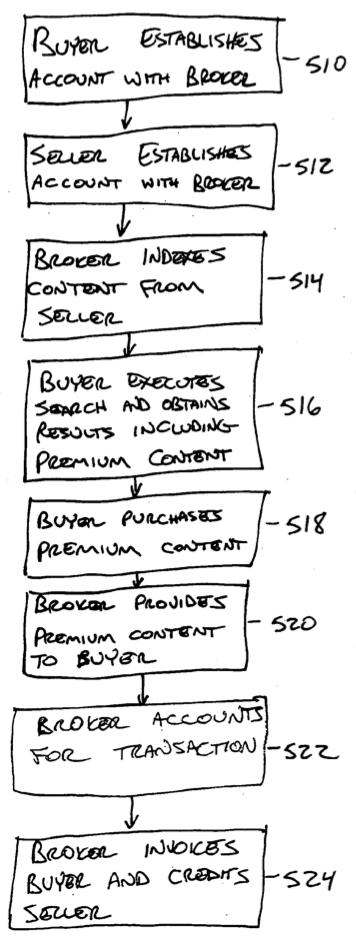![]() Google is developing a micropayment platform that will be “available to both Google and non-Google properties within the next year,” according to a document the company submitted to the Newspaper Association of America. The system, an extension of Google Checkout, would be a new and unexpected option for the news industry as it considers how to charge for content online.
Google is developing a micropayment platform that will be “available to both Google and non-Google properties within the next year,” according to a document the company submitted to the Newspaper Association of America. The system, an extension of Google Checkout, would be a new and unexpected option for the news industry as it considers how to charge for content online.
The revelation comes in an eight-page response to the NAA’s request for paid-content proposals, which it extended to several major technology companies and startups. It’s surprising, given the newspaper industry’s tenuous relationship with Google, that the company was involved at all.
In the document, which you can download here, Google outlines its “vision of a premium content ecosystem” that includes subscriptions across multiple news sites, syndication on third-party sites, accessibility to search, and various payment options, including small fees for access to individual pieces of content (known as micropayments). The company says:
Google believes that an open web benefits all users and publishers. However, “open” need not mean free. We believe that content on the Internet can thrive supported by multiple business models — including content available only via subscription.
Google describes its new e-commerce plans as “in production” and “currently in the early planning stages.” The company says that Google Checkout is currently equipped to handle subscription payments for news sites but describes the process for merchants as “fairly rudimentary” and says the system “could be improved to be more relevant for news and media companies.” The description of Google’s micropayment system is more intriguing:
While currently in the early planning stages, micropayments will be a payment vehicle available to both Google and non-Google properties within the next year. The idea is to allow viable payments of a penny to several dollars by aggregating purchases across merchants and over time. Google will mitigate the risk of non-payment by assigning credit limits based on past purchasing behavior and having credit card instruments on file for those with higher credit limits and using our proprietary risk engines to track abuse or fraud. Merchant integration will be extremely simple. [emphasis theirs]
Transaction costs, including credit card fees, are a major hindrance to micropayment plans under consideration by the news industry, which is why Google’s proposal could be appealing. Of course, newspaper companies that have frequently accused Google of leaching off their revenue might be loathe to participate in a joint venture.
In a brief paragraph entitled “business model,” Google suggests that it would share revenue in a similar fashion to the iTunes App Store and its own Android Market, both of which take a 30% cut of revenue. But while these plans are emerging from Google’s communication with the NAA, the micropayment system is likely to have bigger implications outside of the news industry. In the same document, Google douses some cold water on micropayments for news: “We do not believe it will be the norm for accessing content.”
Google Checkout has longed been discussed as a potential micropayment platform and competitor to eBay’s far more successful PayPal. Google applied for a patent on a micropayment system in 2004; on page 7 of the application, Google mentions that “a seller of web-based electronic content, such as newspaper stories, typically has a purchasing system that is valid for only the website providing the content.” A crudely drawn diagram describes Google’s proposed alternative:

Google’s document for the NAA also discusses publishers syndicating their content on third-party sites and sharing ad revenue, which sounds like what the Fair Syndication Consortium is proposing. There are also a few paid-content scenarios that are worth checking out, including:
We envision the typical scenario to be where a user pays a monthly fee for access to a wide-ranging package of premium content. One example of a “package” might be full access to the WSJ [Wall Street Journal]; another “package” might include the top 10 business publications. Google believes that there is real power and benefit to publishers in providing these sorts of broad, multi-publication access passes.
I’m waiting on comment from Google. UPDATE, 5:21 p.m.: Here it is:
The Newspaper Association of America asked Google to submit some ideas for how they could use technology to generate more revenue from their digital content, and we shared some of those ideas in this proposal. It’s consistent with Google’s effort to help publishers reach bigger audiences, better engage their readers and make more money. We have always said that publishers have full control over their content. If they decide to charge for it, we’ll work with them to ensure that their content can be easily discovered if they want it to be. As for Checkout, we don’t have any specific new services to announce but we’re always looking for ways to make payments online more efficient and user-friendly.
There’s much more to explore in the NAA’s report, which was produced by a task force of newspaper executives charged to explore “platforms for monetizing digital content.” (The committee was formed after the NAA’s secretive meeting in Chicago last spring.) I’ll update with more as I get to it, but if you see anything good, feel free to drop it in the comments or contact me by email.
Here’s the document that Google submitted to the NAA: